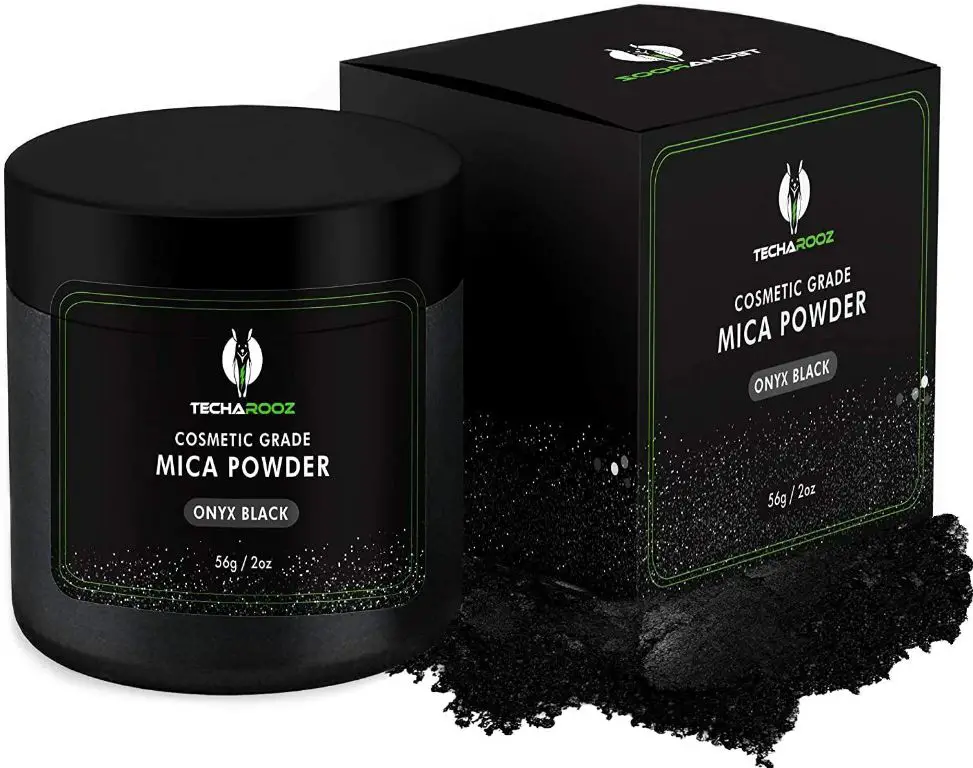Can You Eat Cosmetic Grade Mica Powder?
What is Mica Powder?
Mica is a naturally occurring mineral derived from rocks and stone. It is mined from the earth and ground into a fine, shimmery powder for use in cosmetics and personal care products. Mica gives products a reflective, pearly effect due to its flaky, layered structure that refracts light. The two main types of mica used in cosmetics are muscovite and phlogopite. Muscovite has a lighter, translucent appearance, while phlogopite has a more metallic, opaque effect. Both are valued for adding a luminous, multidimensional quality to makeup, lotions, soaps, and more. Cosmetic mica powder is especially popular for creating shimmery eyeshadows, blushes, and highlighters. Its fine particle size allows for a smooth, even application on the skin. When included in cosmetics, mica powder creates a delicate glow and radiance from within (https://justpigments.com/collections/mica-powder).
Types of Mica Powder
Mica powder comes in two main grades – cosmetic grade and food/nutraceutical grade. The key difference between the two is the purity standards.
Cosmetic grade mica adheres to looser purity standards and may contain impurities not allowed in food. It’s made for external use only. According to Slice of the Moon, cosmetic mica can contain heavy metals like nickel, copper, chromium and cobalt. It may also have iron oxide and fluorine. While safe for cosmetic use on skin and hair, these impurities make it unsuitable for ingestion.

Food/nutraceutical grade mica, on the other hand, must adhere to stricter standards for heavy metals and other contaminants. It’s manufactured in facilities that meet FDA food production standards. This makes it safe to ingest in small amounts as a food additive or supplement, unlike cosmetic grade per Craftiviti.
Is Cosmetic Grade Mica Safe to Ingest?
Cosmetic grade mica powder is not meant for consumption or ingestion due to potential impurities. Mica used in cosmetics may contain impurities like heavy metals that can be harmful if swallowed (1).
While small, incidental amounts of cosmetic mica are unlikely to cause harm, health agencies advise against intentionally ingesting it. The FDA requires that all color additives be approved before they can be used in food, drugs, or cosmetics. But cosmetic grade mica has not undergone this approval process and may contain impurities not found in food-grade versions (2).
For these reasons, cosmetic mica powders are not recommended for consumption. While small exposures from lip products or dust inhalation are not likely dangerous, intentionally eating cosmetic mica could pose health risks from impurities. Safer options include switching to food-grade mica or edible glitter.
Potential Health Risks
There are two main potential health risks associated with mica powder:
Heavy Metal Contamination
Mica can be contaminated with heavy metals like lead, mercury, arsenic and cadmium during the mining and processing stages [1]. These heavy metals can build up in the body over time and cause serious health effects like kidney and brain damage [2]. Cosmetic-grade mica goes through more extensive processing and testing to limit allowable levels of heavy metals, but ingesting it regularly could still potentially lead to excessive exposure.
Asbestos Contamination
Asbestos fibers are often found intertwined with mica deposits in nature. If not properly removed, asbestos can contaminate the end mica product [3]. Inhaling asbestos fibers long-term can cause serious respiratory diseases like asbestosis, lung cancer and mesothelioma [4]. Again, cosmetic mica goes through more purification, but ingestion could theoretically still pose a risk of exposure.
FDA Stance on Ingestible Cosmetic Ingredients
The U.S. Food and Drug Administration (FDA) does not approve cosmetic ingredients for ingestion. Cosmetics, including mica powder, are regulated differently than food products. According to the FDA, “The law does not require cosmetic products and ingredients to have FDA approval before they go on the market” (https://www.fda.gov/cosmetics/cosmetics-laws-regulations/fda-authority-over-cosmetics-how-cosmetics-are-not-fda-approved).
The FDA monitors toxicity reports and other safety information to determine if regulatory action is needed on certain cosmetic ingredients. But the agency does not evaluate cosmetic ingredients for safety before they reach consumers. The FDA states, “It is the responsibility of cosmetic manufacturers to ensure that their products and ingredients are safe for the intended use” (https://www.fda.gov/cosmetics/cosmetics-laws-regulations/fda-authority-over-cosmetics-how-cosmetics-are-not-fda-approved).
In summary, the FDA regulates cosmetics differently than food and does not approve cosmetic ingredients, like mica powder, for ingestion.
Alternatives for Ingestion
Instead of ingesting cosmetic grade mica powder, it is recommended to use mica powders that are specifically formulated for ingestion. Food and nutraceutical grade mica powders are manufactured under GMP standards and tested for safety and purity.
One alternative is to use food-grade mica powders that are commonly added to candies, icings, and baked goods for pearlescent and glittery effects. These are safe to eat in small quantities. Some reputable brands for edible mica include Dust’N’Glitters and Sweet Dreams Mica.
Other edible alternatives are fruit and vegetable powders that can naturally provide shimmery effects. For example, beet powder can impart a pearlescent pink/reddish effect. Carrot powder creates an orange shimmer. Spirulina powder has a green/blue glow. These are healthier options compared to synthetic mica.
Additionally, there are some eco-friendly pearlescent powders made of cellulose, calcium carbonate, and iron oxides that can serve as edible substitutes. However, it’s important to verify if the specific brand and formulation is actually safe for ingestion.
Overall, it’s best to avoid cosmetic mica for ingestion and use alternatives specifically designed as food additives. This helps prevent potential health risks from impurities or toxicity (Source).
Tips for Safe Use
When considering ingesting mica powder, it’s important to take proper precautions to ensure safety:
Do not purchase mica marketed only for cosmetics for ingestion. Mica sold for cosmetic use may not be food-grade and could contain contaminants that are unsafe to ingest. Only purchase mica explicitly labeled as food-grade or edible (source).
Be aware of heavy metal testing. Mica can contain small amounts of heavy metals like lead and arsenic that can build up in the body over time. Look for mica that has been tested for heavy metals and is confirmed to be safe for ingestion (source).
Use mica sparingly in food and beverages. Large amounts may be difficult for the body to pass and could cause intestinal blockage. Stick to small sprinkles as decoration.
Consult your doctor before regularly ingesting mica, especially if pregnant, breastfeeding, or have a health condition. Make sure it won’t interact with any medications you take.
Stop consuming immediately if you experience any nausea, vomiting, or other side effects and seek medical advice.
Cosmetic vs Edible Uses
There is an important distinction between cosmetic grade mica and mica designed for culinary use. Cosmetic mica powders are created for external use only and are not meant to be ingested.
Cosmetic mica is designed to be used on the skin, hair, or nails. It provides shimmer, sparkle, and color when used in products like eyeshadow, blush, nail polish, lotions, soaps, and more. Cosmetic mica goes through strict regulation and testing to ensure it is safe for topical use. However, the FDA advises against using cosmetic products in the mouth or ingesting them, as they are not approved as food additives [1].
In contrast, edible mica is specifically created for safe consumption in food or drink. It provides shimmer and a pearlescent effect when used to decorate cakes, candy, cocktails, and more. Edible mica meets FDA standards for food-grade ingredients and additives. It should be clearly labeled as “edible” or “food-grade” mica [2].
It’s crucial to only use cosmetic mica as directed for external use and edible mica for internal consumption. Misusing mica powders can pose safety risks. When in doubt, contact the manufacturer to verify if a mica product is intended for ingestion or not before using it in food or drink.
Final Verdict
Based on the potential health risks, ingestion of cosmetic grade mica powder is not recommended. Cosmetic grade ingredients are not held to the same strict purity standards as food grade additives. Trace amounts of contaminants like heavy metals could be present, as cosmetic mica is not regulated for oral consumption.
If you want to add mica powder to food or drinks, it’s best to seek out verified ingestible options specifically labeled as food grade or edible. These will have been tested for safety when eaten. Going with a dedicated culinary mica product gives you peace of mind that what you’re consuming meets purity standards for eating and drinking.
While the FDA does not overtly prohibit the ingestion of cosmetic ingredients, they do advise caution and recommend consuming as intended. When in doubt, consult your doctor before ingesting any supplement, additive or powder.
Sources
[1] U.S. Food and Drug Administration. “Is It a Cosmetic, a Drug, or Both? (Or Is It Soap?)” https://www.fda.gov/cosmetics/cosmetics-laws-regulations/it-cosmetic-drug-or-both-or-it-soap. Accessed January 2023.
[2] A.D.A.M. Medical Encyclopedia. “Mica.” https://medlineplus.gov/ency/article/002484.htm. Accessed January 2023.
[3] European Food Safety Authority. “Re-evaluation of mica (E 555) as a food additive.” https://efsa.onlinelibrary.wiley.com/doi/epdf/10.2903/j.efsa.2018.5057. Published January 2018.
[4] U.S. Food and Drug Administration. “Is it Really ‘FDA Approved?’” https://www.fda.gov/consumers/consumer-updates/it-really-fda-approved. Accessed January 2023.


